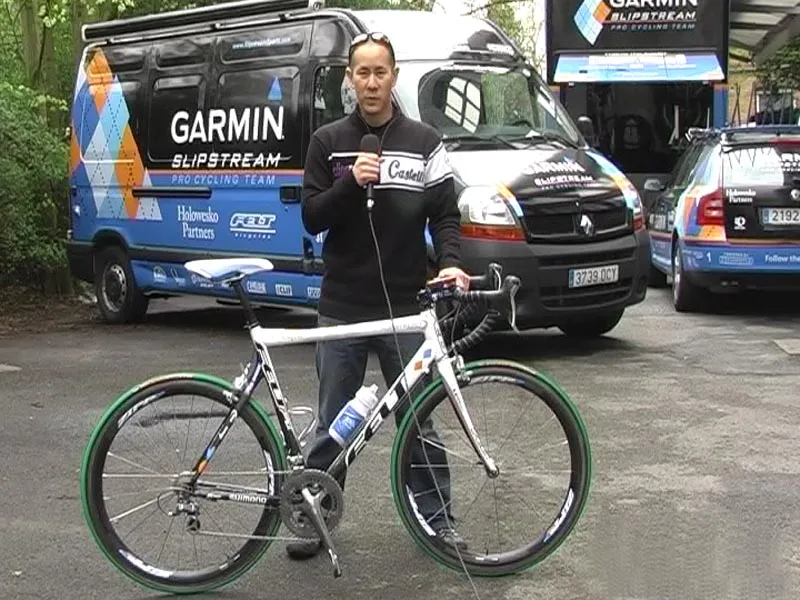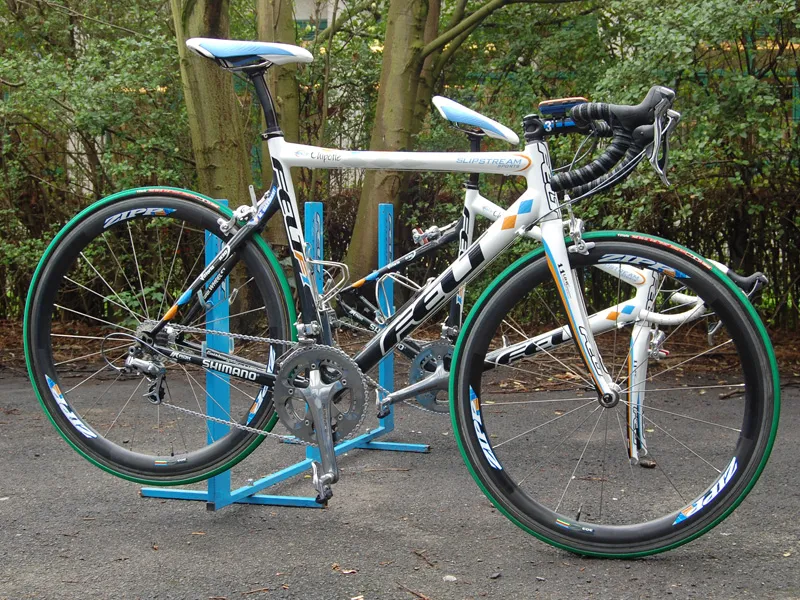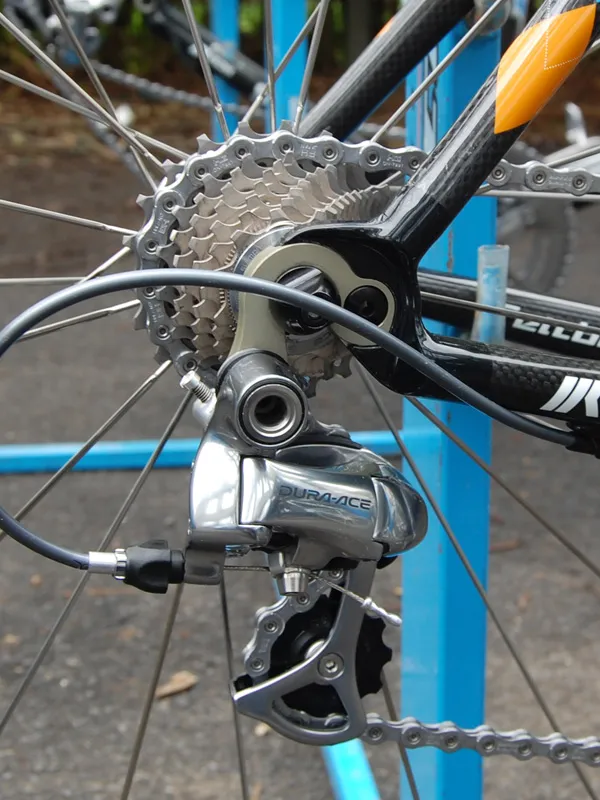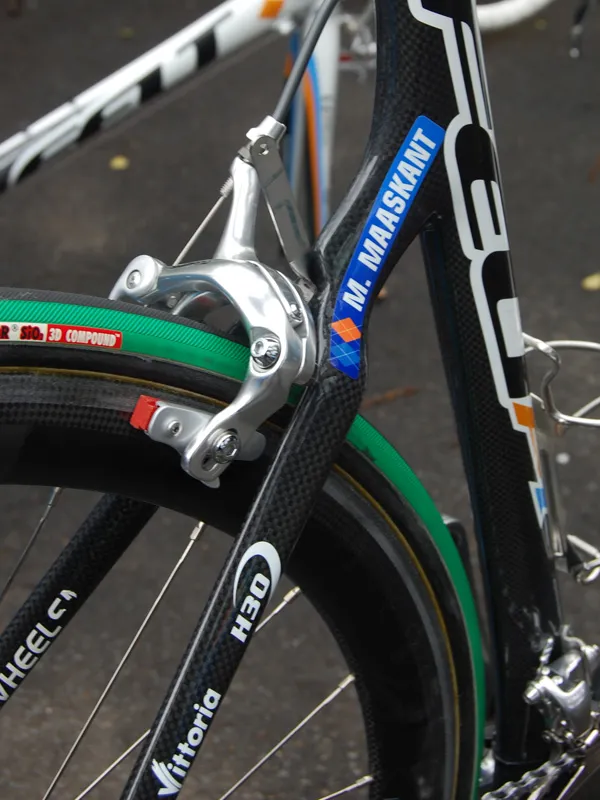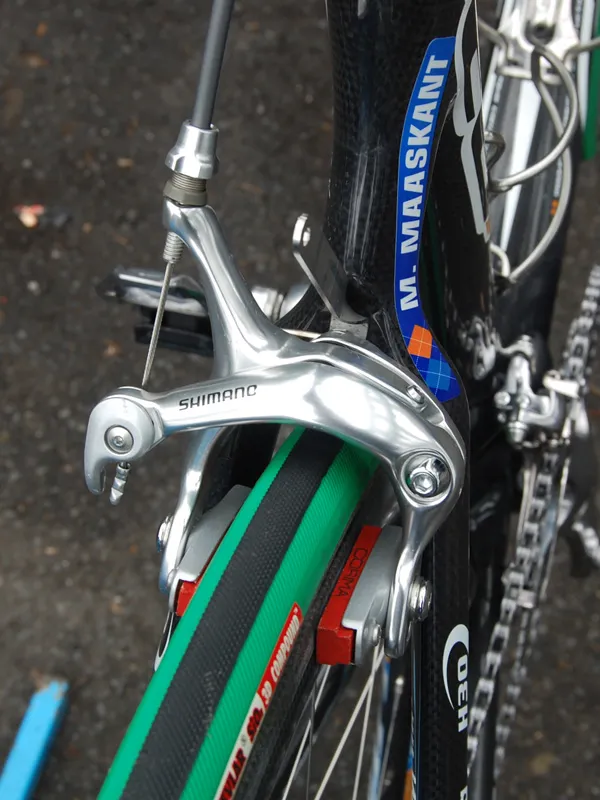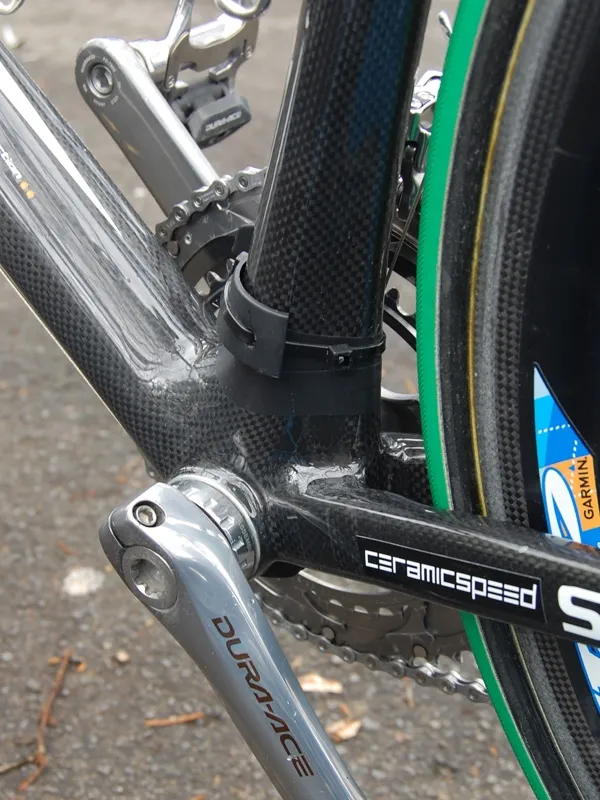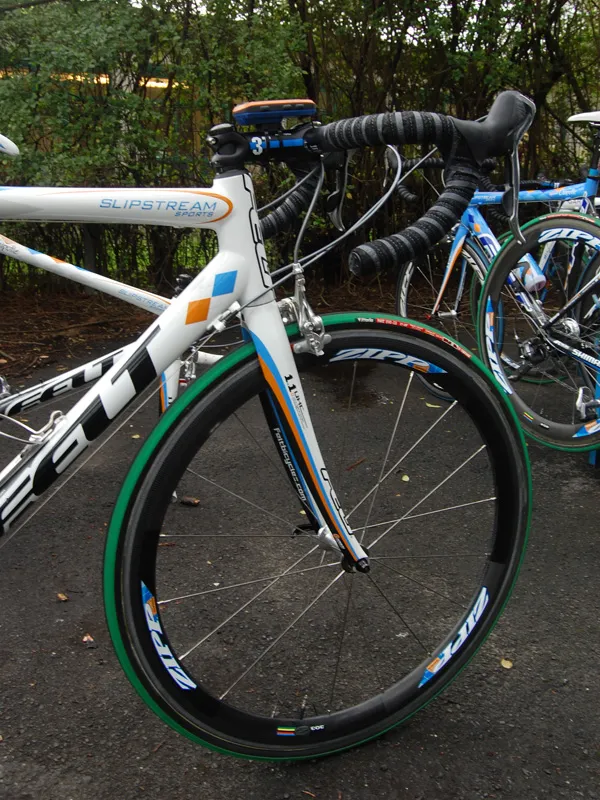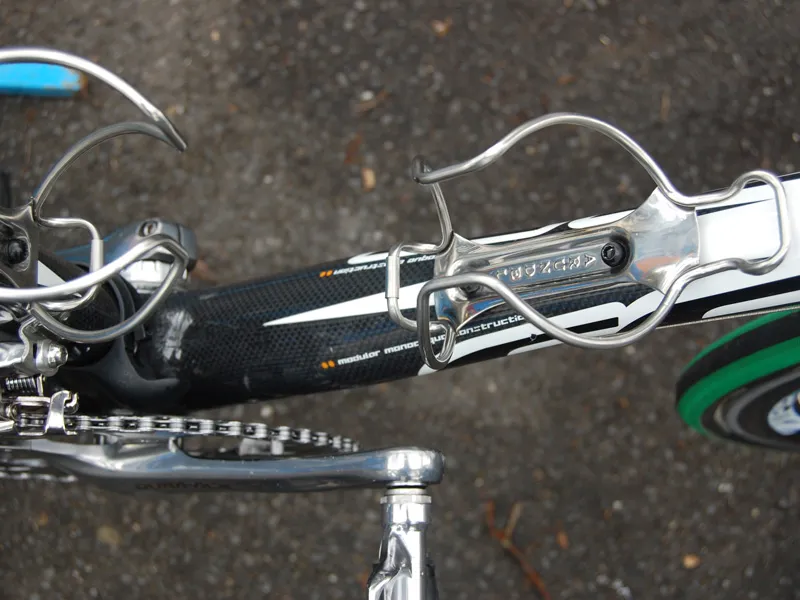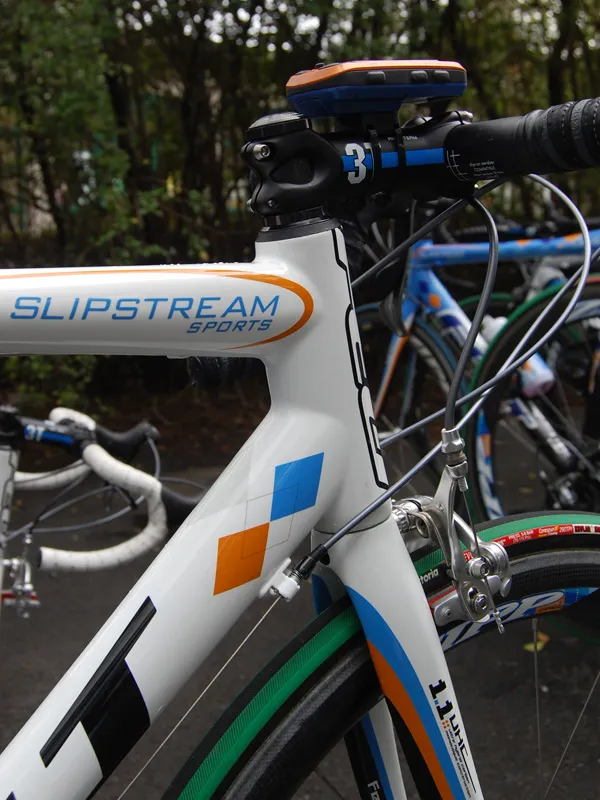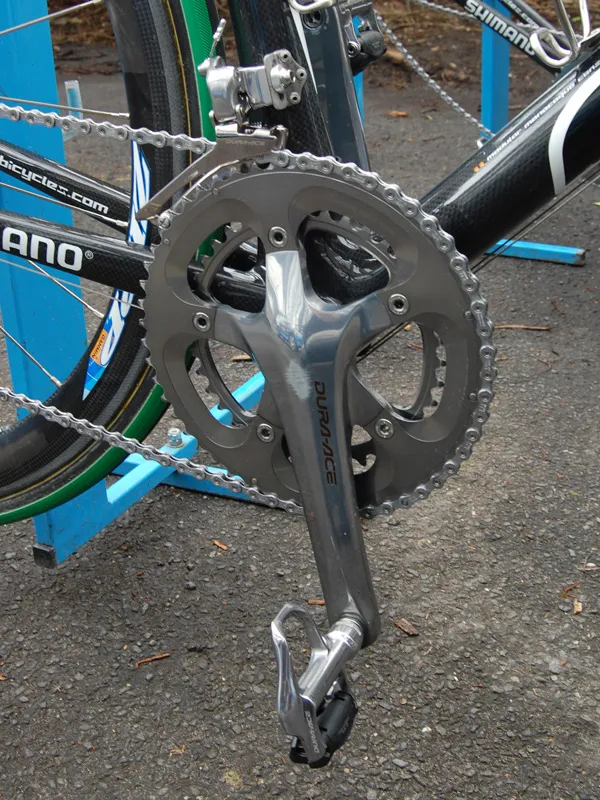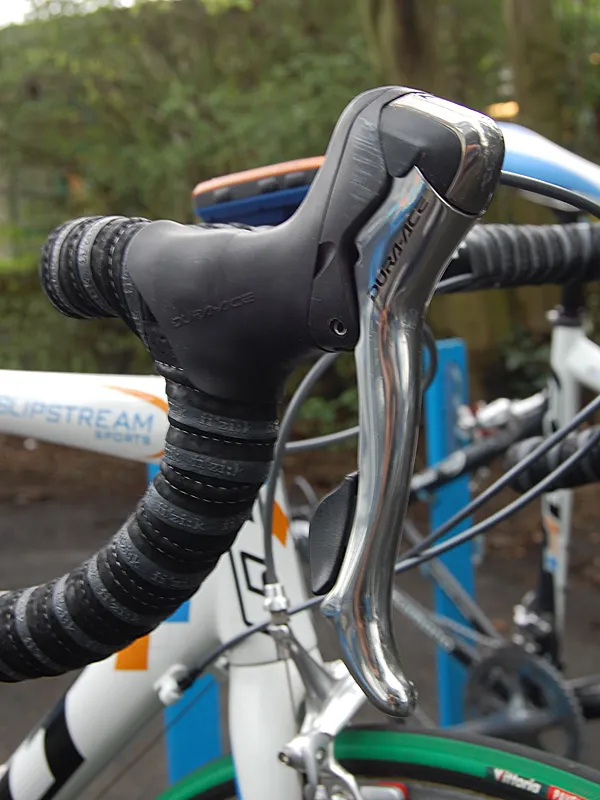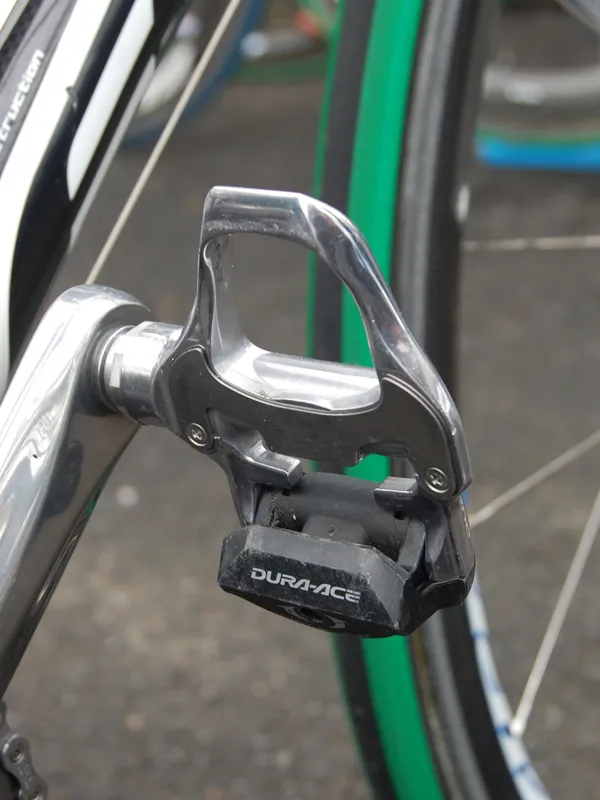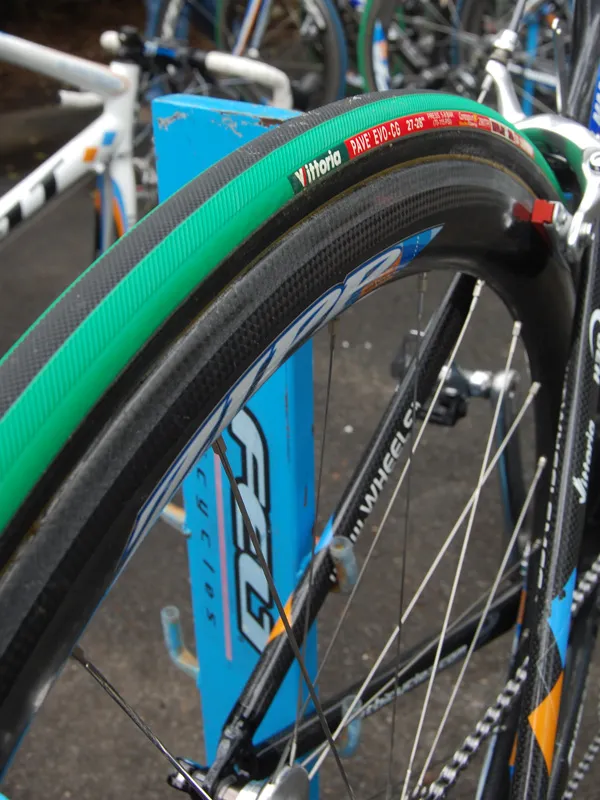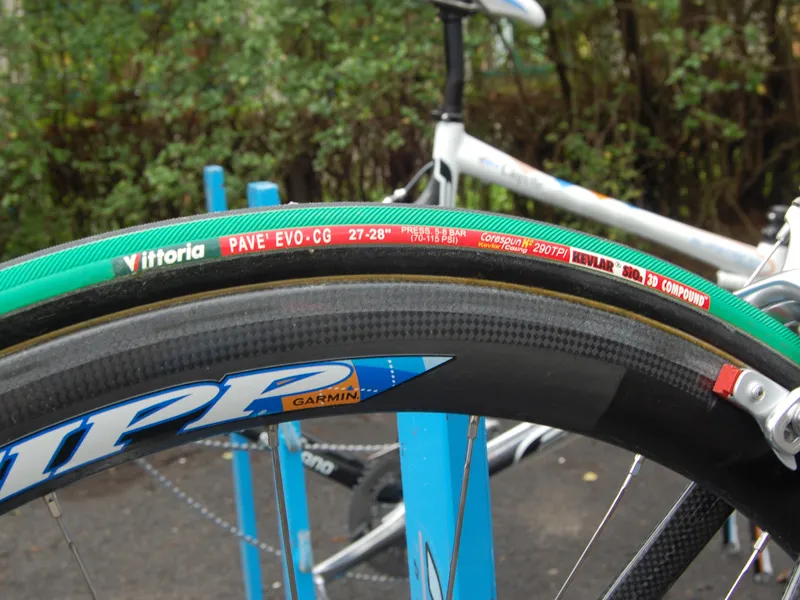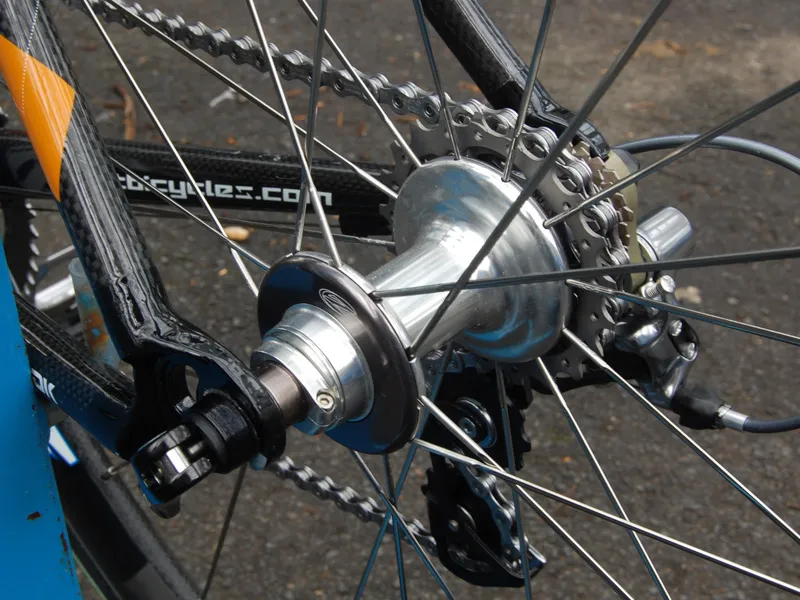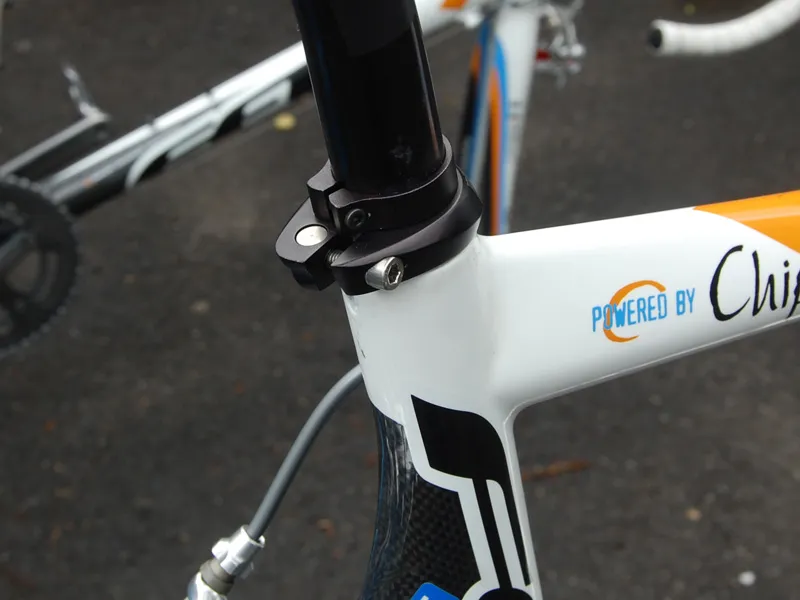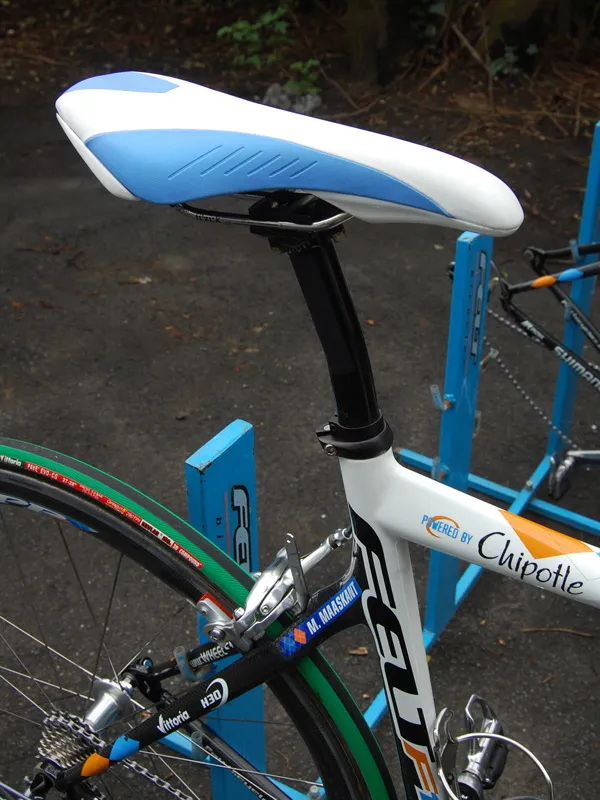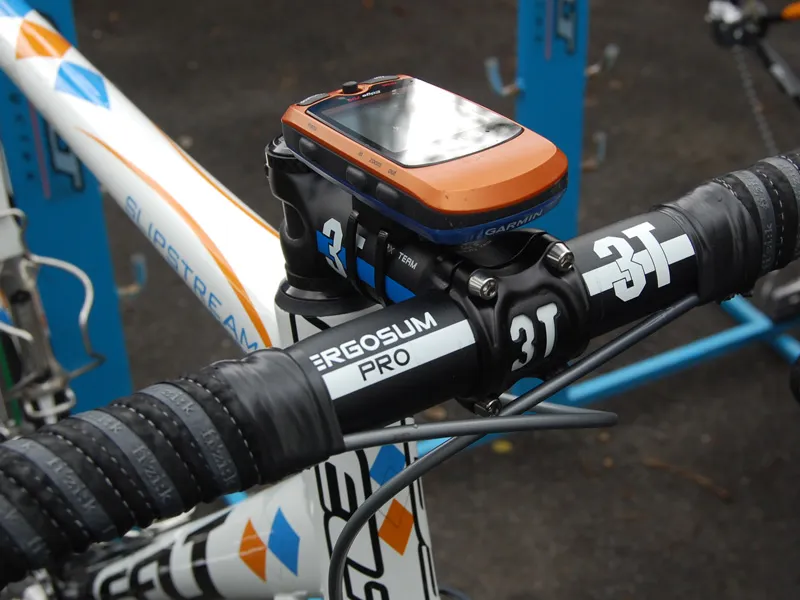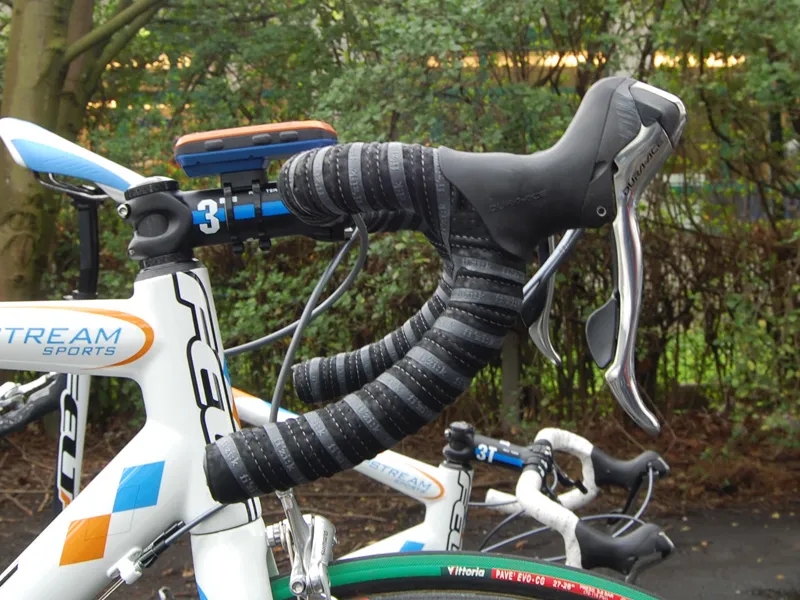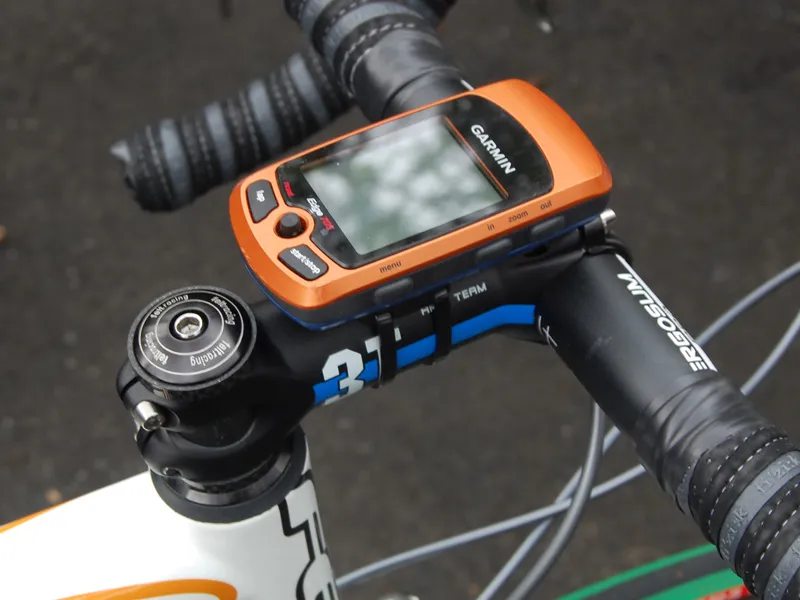Twenty-four-year-old Dutchman Martijn Maaskant (Garmin-Slipstream p/b Chipotle) finished a remarkable fourth in his first attempt at Paris-Roubaix in 2008. Unfortunately, two crashes in crucial areas of this year’s race left him at the bottom end of the finishing field.
Garmin-Slipstream had at least six bikes at the ready for Maaskant to accommodate mechanical failures and at least two of those machines were dedicated Paris-Roubaix rigs specially designed to deal with the unique rigours of the day.
Team sponsor Felt built the bikes using a mix of F1 SL and F1 Sprint materials to provide both pave-proof durability along with a reasonably comfortable rear end. The fork also uses a thicker carbon steerer tube for improved impact and fatigue resistance.
Frame weight with paint is estimated by Felt to be about 1125g while the reinforced fork adds another 375g.
If Maaskant's bike looks familiar, it should. It's identical to the one he used for last year's bid and everyone involved had enough confidence in the subtle modifications Felt introduced then to use it again for this year’s race.
Tweaks included longer chain stays that are also indented at the tyre, a seat stay assembly shifted further upwards, special rear dropouts that lower the bottom bracket plus longer alloy fork tips with additional rake.
To watch the video click play below:
Unable to load media
All of these substitutions yield extra tyre and brake clearance as well as a longer wheelbase and lower centre of gravity for more stable handling – all critical changes for Paris-Roubaix's anything-but-even and often dangerous road surfaces.
The legendary cobbles of the Arenberg forest are some of the most demanding of the race – not only for their roughness but also the speed at which the riders usually attack them – and they claimed a handful of the Zipp carbon rims the team ran last year.
This time around Zipp provided Maaskant and his team-mates with prototype 303 rims that are said to be much more resistant to impact damage than before. The new rims boast a toroidal profile similar to Zipp's 1080 and are substantially wider than before - roughly 27mm at their midsection. They also sport angled braking surfaces that are said to marginally improve stopping ability. Exact strength-enhancing measures are still yet to be disclosed by Zipp but some variant of their recent CarbonBridge technology is likely.
The rims may be new but Maaskant's componentry was not as he and the rest of Garmin-Slipstream tackled Paris-Roubaix using previous-generation Shimano Dura-Ace groups augmented with ceramic bearings from sponsor CeramicSpeed and long-reach brake calipers.
Though marginally heavier than the latest 7900 version, the team says 7800's greater use of forged alloy construction makes it more tolerant of crashes.
Other tweaks included flatlander gearing - Maaskant used 46/53T chainrings and an 11-21T cassette.
Cockpit components included a 3T bar and stem and a camouflaged Thomson layback seatpost - all in aluminium - and the rest of the bike was rounded out with a fi'zi:k Nisene saddle, Arundel stainless steel bottle cages, Vittoria tubulars and a Garmin Edge 705 GPS-enabled computer.
For full results, report and photos of Paris-Roubaix, visit Cyclingnews.com
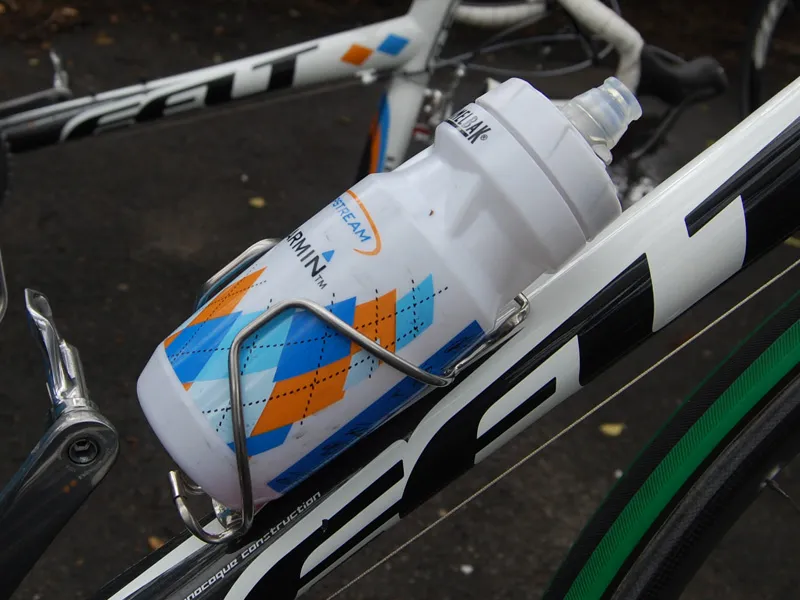
Maaskant went for a steel Arudnel cage to hold his Camelbak podium bottle in place
Full specification
Critical measurements
